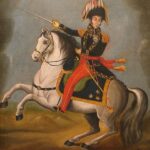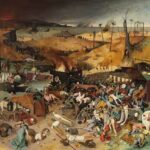![]()
When surveying the music of the war years, where to begin? On April 30,1939, the New York World’s Fair opened its doors. Promoters called it “The World of Tomorrow,” and the exposition promised a look at scientific, technological, and consumer wonders never before seen.
It had as its theme song “Dawn of a New Day,” a composition based on incomplete music left by George Gershwin before his untimely death in 1937. His brother Ira, along with composer Kay Swift, finished the number, with Ira contributing the lyrics. Given “The World of Tomorrow” theme, “Dawn of a New Day” doubtless seemed at the time a fitting accompaniment and a possible way to introducé the music of the 1940s.
But then September 1,1939, rolled around, and German troops invaded Poland, plunging the world into the most horrific conflict it had ever witnessed. England and France braced for war, and across the far Pacific, Japan had already begun its march toward Asian dominance. But peace prevailed in the United States, and the foreign news seemed remote and of little concern to most Americans. Among the popular hits for late August and early September that year were “(Hep! Hep!) The Jumpin’ Jive” by Cab Calloway and his orchestra and Glenn Miller’s recording of “Over the Rainbow” – made more famous ofcourse by the Wizard of Oz movie of that same year – neither of which reflected in any way a new day nor the political realities of the time.
The Swing Era, that nostalgie period of the big bands and dance halls and jitterbugs, continued to roar along in high gear, and few foresaw the shifts in popular music that would take place as the new decade and new styles displaced the once-reigning formats of the 1930s. Most people continued to listen and dance to Artie Shaw’s “Frenesi,” Jimmy Dorsey’s rendition of “The Breeze and I,” and Tommy Dorsey’s ‘I’ll Never Smile Again” with Frank Sinatra doing the vocal honors. They had little reason to think that much would change very soon, but they would be mistaken.
The enduring standard from “The Wizard Of Oz” sits at the top more than one list of the greatest songs of the 20th century. It spent seven weeks at #1 on “Your Hit Parade” and sold a fair number of 78s for various artists, including this Glenn Miller version above (despite Ray Eberle’s errant non-rhyming lyric).







